
Ferrari SF-23, "an unprecedented car in terms of speed"
These are not the words of a particularly optimistic fan or the hope of those who want to see the Scuderia back at the top, but the way in which the CEO, Benedetto Vigna, presented the new Ferrari SF-23 to the world. After the presentation and the shakedown at Fiorano, both done live, let's discover the technical background of the latest creature engineered by the minds from Gestione Sportiva, in Maranello.
Front end concept inspired by the F1-75, but with some new features
The differences that distinguish the SF-23 from its predecessor start from the nose. Although it remains very narrow and tapered, it is now linked to the second flap of the front wing, and no more on the mainplane. The advantage of this solution lies in the possibility of leaving room between the first two flaps for the airflow to be introduced into the Venturi channels.
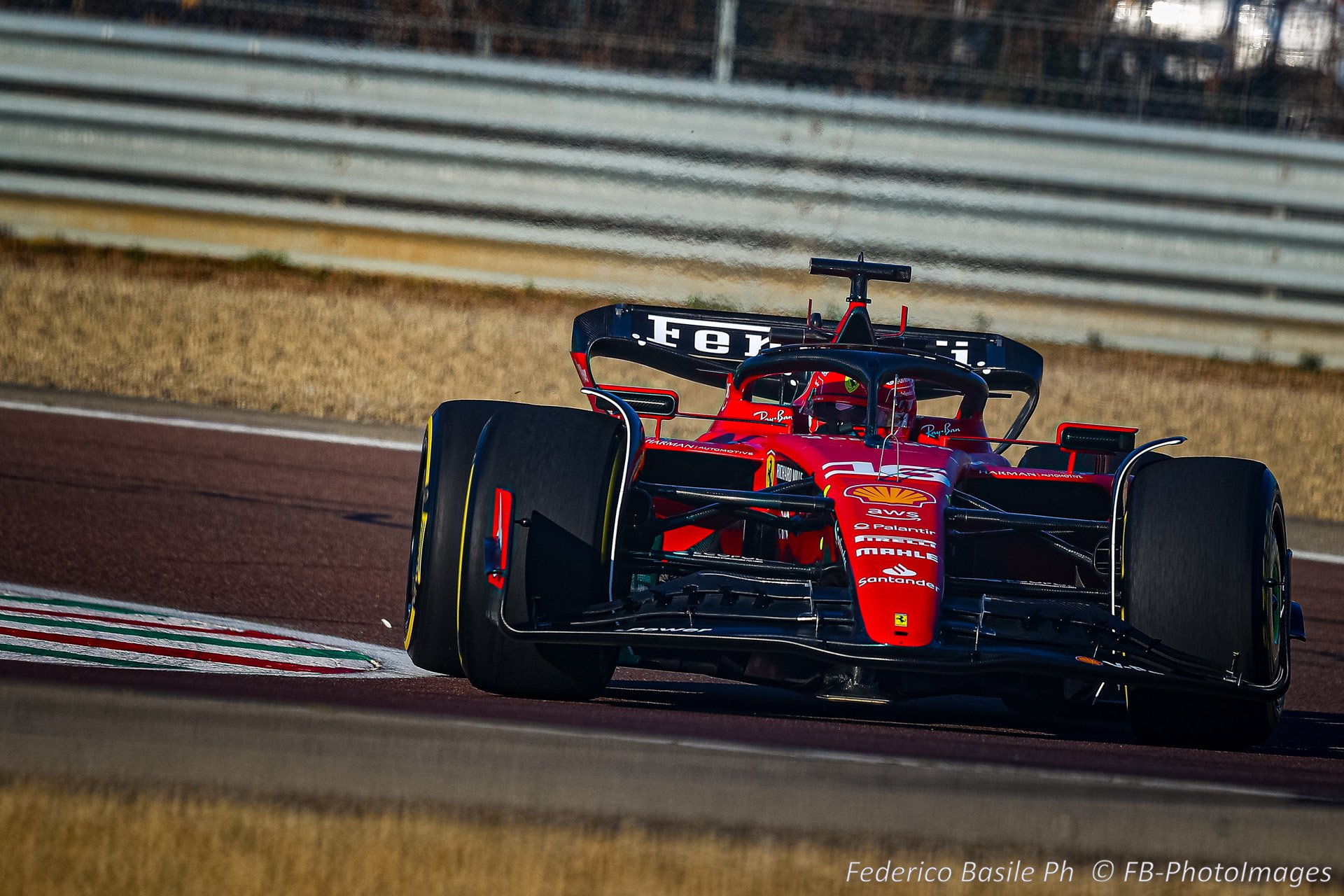
Photo: Federico Basile (FB-PhotoImages)
The "NACA" type air intake of the F1-75 has been replaced by a more squared one, whose task however - rather than aerodynamic - is to cool the scorching cockpit. Continuing along the nose, its lower surface is very hollowed out, a sign that on a structural level Ferrari has been able to afford this aerodynamically advantageous choice.
The front wing also presents some novelties: the geometry conceived by the engineers from Maranello suggests an inboard aerodynamic load distribution; at the same time, it is clear that the wing profiles go downwards while approaching the endplates (now equipped with a more curved diveplane). The target of such a geometry isn’t new across Formula 1 technical departments, and indeed it seems to have become a trend in 2023: it is a question of generating outwash, i.e. pushing the airflow outside of the car - to ensure that the harmful turbulence generated by the rolling front tires can be diverted from the car bodywork.

Photo: Scuderia Ferrari
The technical solution that immediately catches the eye when observing the front wing, however, is a series of 5 slot gap separators strongly twisted outwards. A controversy immediately arose among insiders and enthusiasts about the regularity of these elements, given that at the end of 2022 (at the Austin Grand Prix) a very similar solution from Mercedes was deemed illegal by the FIA.
Let's clarify: article 3.9.8(B) of the 2022 Technical Regulations required that any component mounted on the front wing must have had a primary structural function. Following the doubts raised by Mercedes about the arbitrariness of each component’s function, the above mentioned article was rewritten. According to the current standard, the slot gap separators at issue are to be considered legal provided that they meet certain geometric constraints and that the team demonstrates their structural function - regardless of the aerodynamic effects that could arise… And what are the aerodynamic effects intended? Once again, creating outwash!
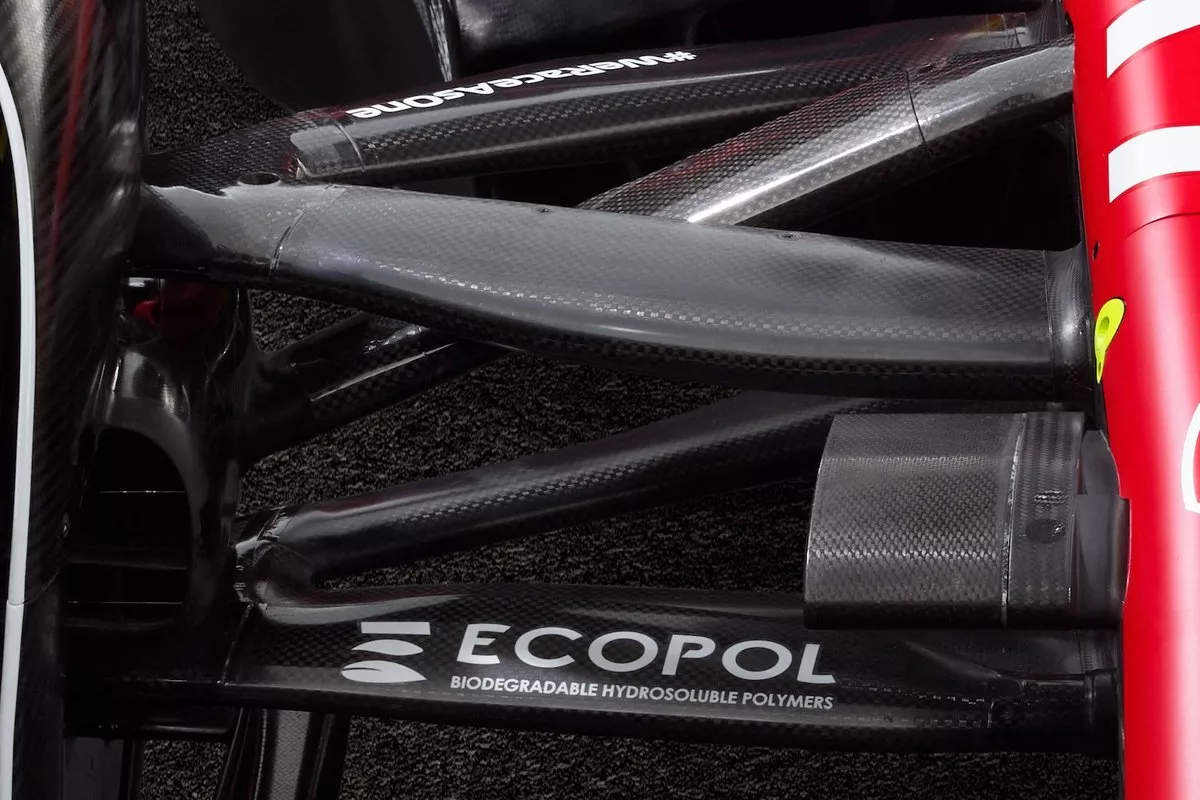
Photo: Scuderia Ferrari
The front suspension, as in 2022, has a "push-rod" configuration, but the geometries of the two wishbones - and of the steering rod - have changed. On the SF-23, the rear arm of the upper wishbone has been lowered, while the steering rod has been aligned with the arm of the lower wishbone, similar to what Red Bull ran last year. In doing so, it’s easier to direct the flows coming from the front wing towards the Venturi channels, as well as avoiding tradeoffs from a mechanical standpoint!
High sidepods and the return of S-Duct (?): many "grey areas" have been exploited!
The biggest part of the work carried out by the men from Maranello was concentrated in the central area of the SF-23. The sidepods, a true element of differentiation between the various teams in this ground effect era, maintain the aerodynamic philosophy of the F1-75: their section is wide but not descending, so there is no attempt - through "downwash" - to guide the airflow towards the top of the diffuser. Instead, Ferrari’s wide sidepods are intended to “shield” the frontal area of the rear tires, decreasing the aerodynamic drag they would otherwise generate.
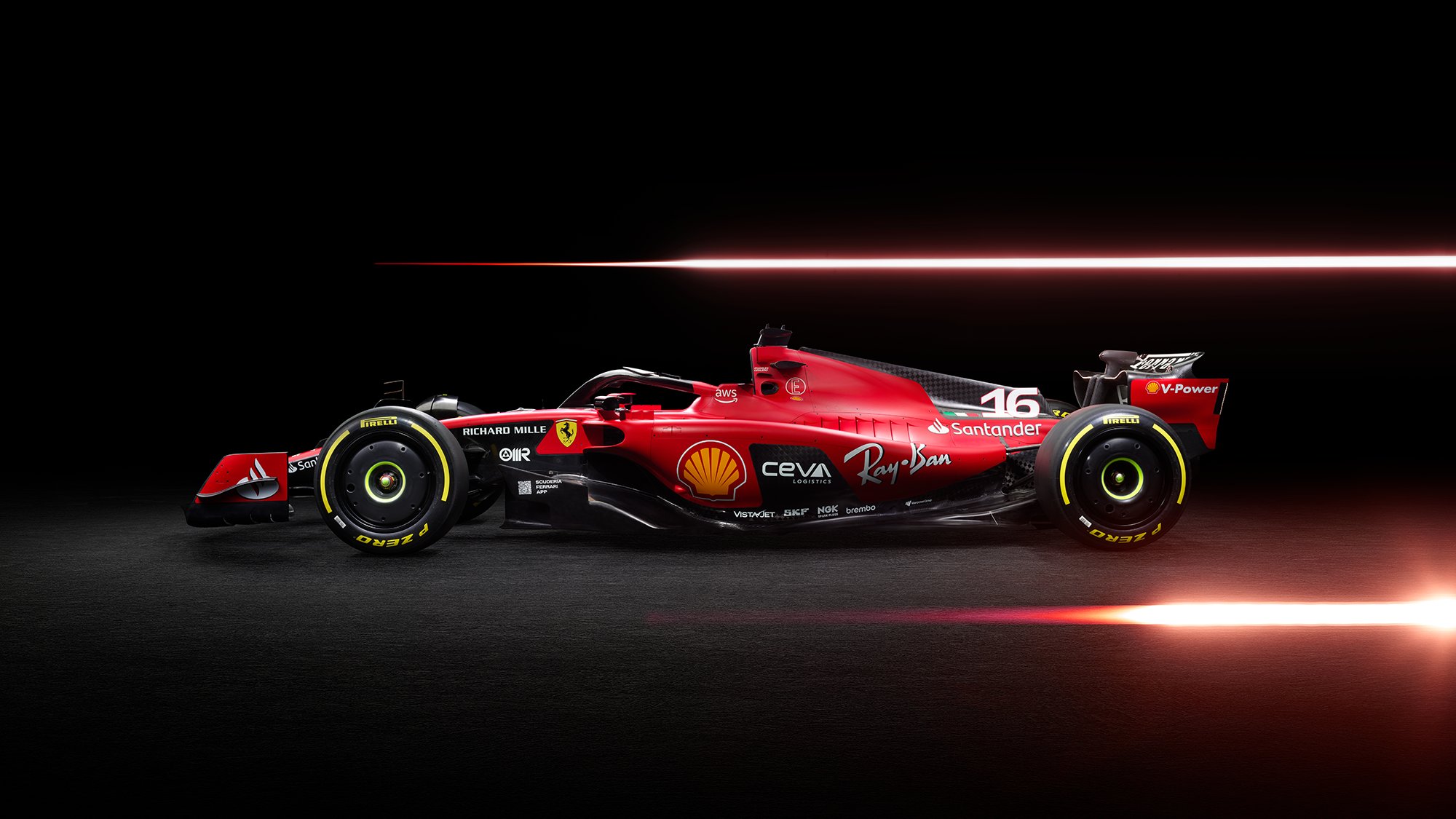
Photo: Scuderia Ferrari
In fulfilling this technical requirement, however, Ferrari’s engineers have certainly not forgotten the importance of the flow that reaches the diffuser: that’s why a large undercut is made possible thanks to the very high inlet positioning. This undercut helps the air mass coming from the front flowing along the sidepods, where due to the Coanda effect it remains attached until - as anticipated - towards the upper part of the diffuser: in this way, it will be able to enhance its function of air extraction from the underbody, further increasing the downforce generated.
In this technical framework, which direction should the design of the upper portion of the sidepods and the cooling layout follow? Maranello's aerodynamics department intelligently chose to integrate these two elements, exploiting the so-called “grey areas”of the Technical Regulations…
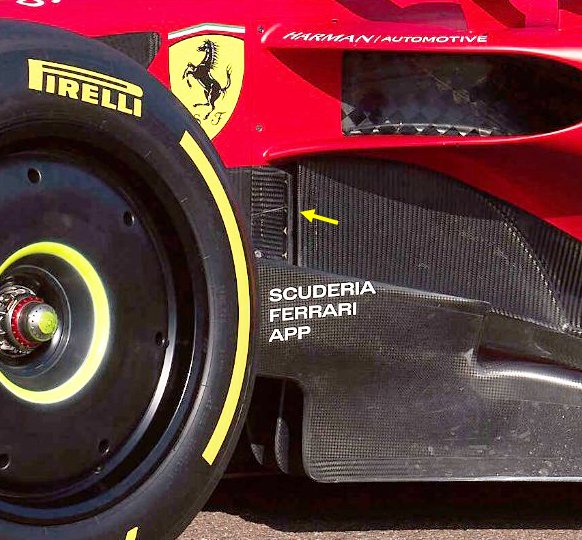
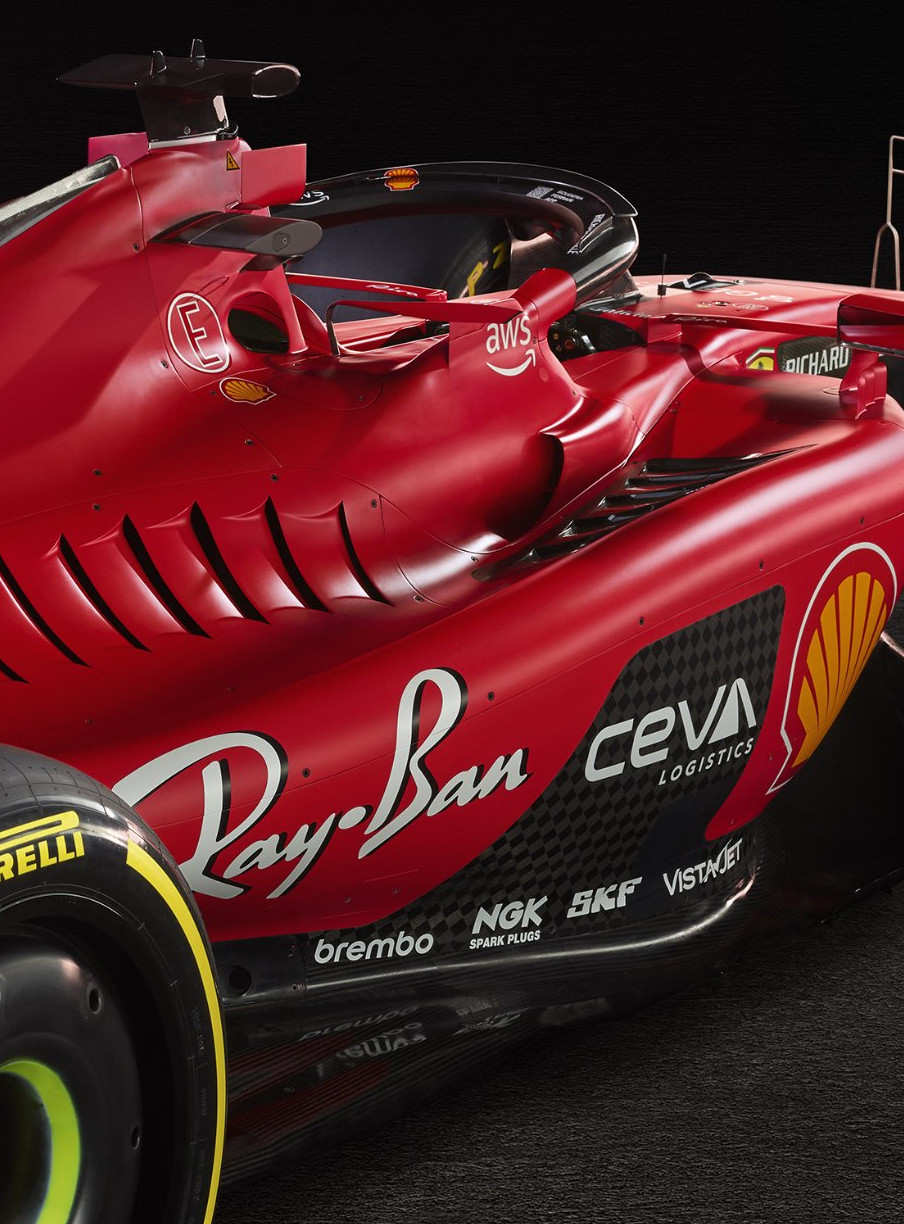
Photo: Scuderia Ferrari
In fact, under the radiators’ inlet (where the yellow arrow is positioned) you can see the a duct opening, of which it is not yet clear what the outlet is...
If the outlet of this duct were to be the one shown in the following image, Ferrari would have found a way to implement something similar to the old "S-Duct", used on the noses of the past generations of single-seaters.
The idea would be to relieve the pressure of the airflow that feeds the undercut, that results in an increase in its speed (and the effectiveness of the entire single-seater up to the diffuser, actually). Not only that, because by "blowing" air on the upper side of the sidepods - what Ferrari internally calls "goldfish tanks" - it is possible to feed the rear wing and the underlying beam wing.
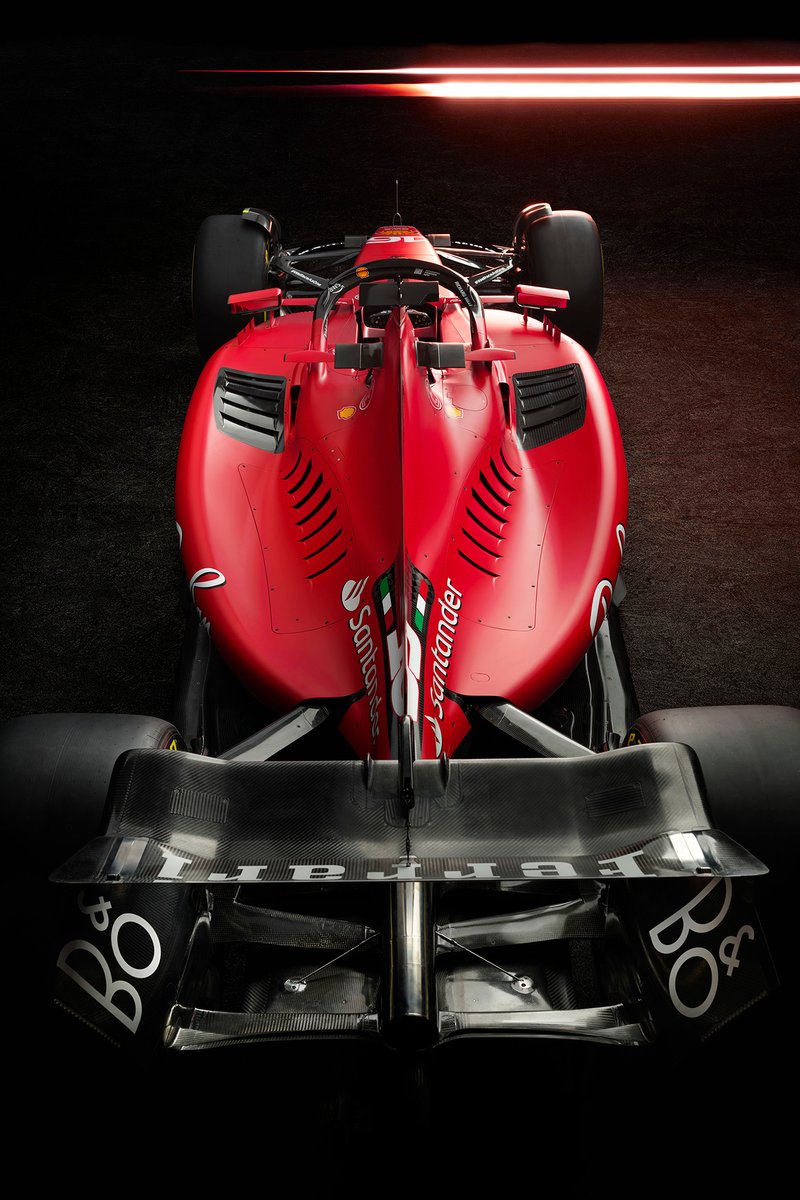
Photo: Scuderia Ferrari
The unique Ferrari shape of the wide sidepods, now iconic in Formula 1, also makes it possible to house all the radiators (this year, however, slightly reduced in size), thus avoiding their positioning next to the bonnet, in a higher area. The louvres made necessary by the enormous amount of heat that has to be rejected are modular this year: in addition to the 7 fixed vertical "gills", there are in fact 5 other horizontal ones - and in a more advanced position - which may or may not be used depending on the cooling requirement at each Grand Prix.
The SF-23, therefore, doesn’t choose the popular "centerline cooling"; by doing so, you get a double benefit:
- Keeping the center of gravity (COG) as low as possible, with advantages in terms of vehicle dynamics;
- Being able to have a tapered engine cover, with some good advantages in terms of rear wing efficiency;
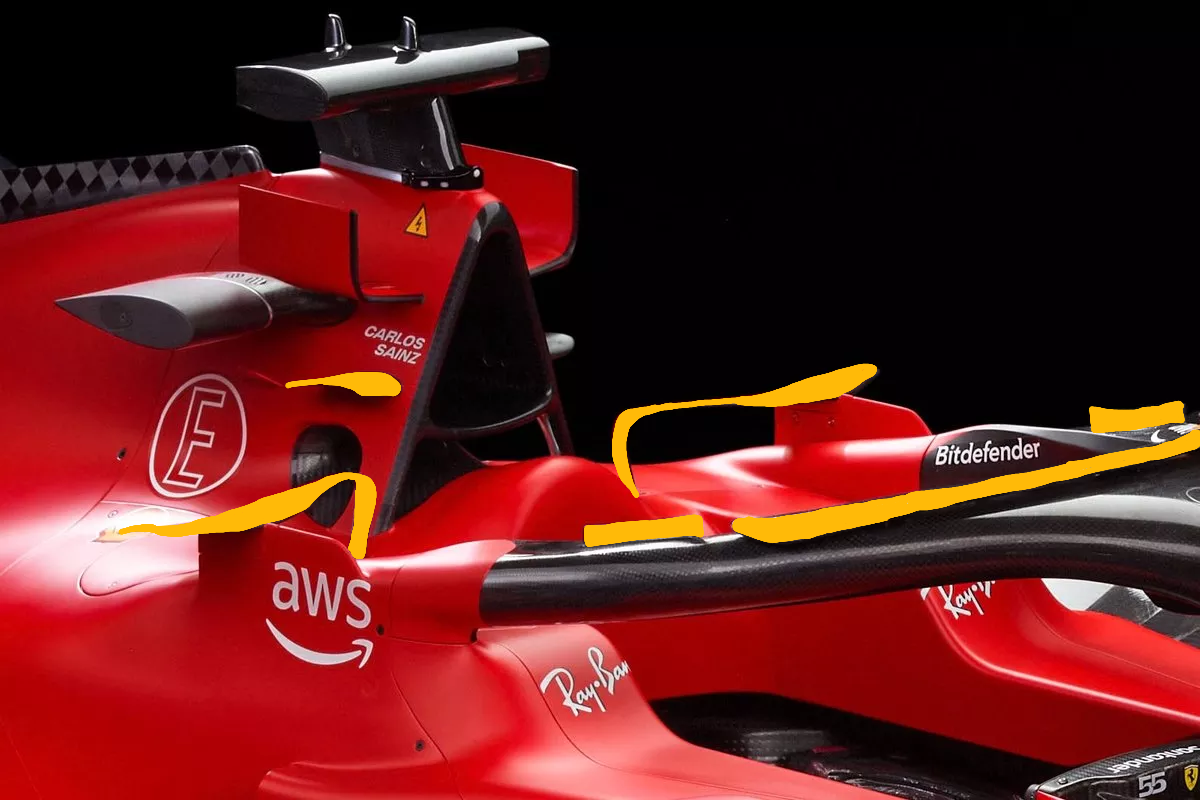
Photo: Scuderia Ferrari
Remaining in the central area of the SF-23, many new flaps and winglets can be observed on the Halo and around the cockpit. The engine cover, as anticipated, is really tapered (perhaps the smallest in Formula 1), and feeds the Power Unit via a small airbox with a triangular section inlet. As in the past 3 years, a pair of "horns" sprout near the inlet section of the airbox and extend to the maximum height of the roll hoop.
What are the changes at the rear of the SF-23?
So we come to the rear end of the new SF-23, an area certainly less full of novelties than the rest of the car, but with the big unknown represented by the underbody. Being, as we know, a decisive component for the overall performance, it is understandable that during the presentation it was kept hidden.
No less important are the changes imposed by the FIA to prevent the porpoising phenomenon. The 15 mm rise for the bottom edges and 10 mm for the diffuser throat forced the Maranello engineers to modify some important geometries of the suspension, bodywork and even the gearbox case.
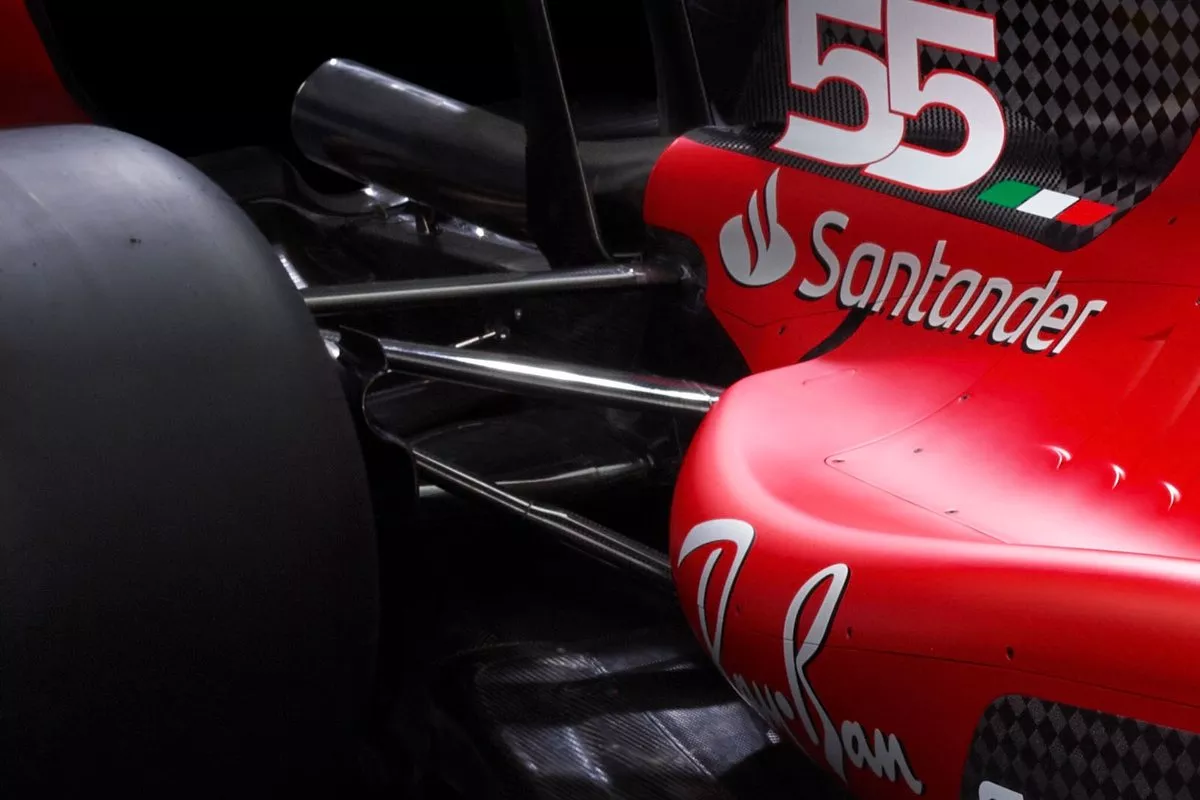
Photo: Scuderia Ferrari
The rear suspension stays true to last year's pull-rod layout, but incorporates revised linkages to accentuate the anti-squat feature. In other words, it prevents the car from "sitting" on the rear during acceleration: an effect sought in the slightest part to improve traction, but which becomes problematic if too exaggerated.
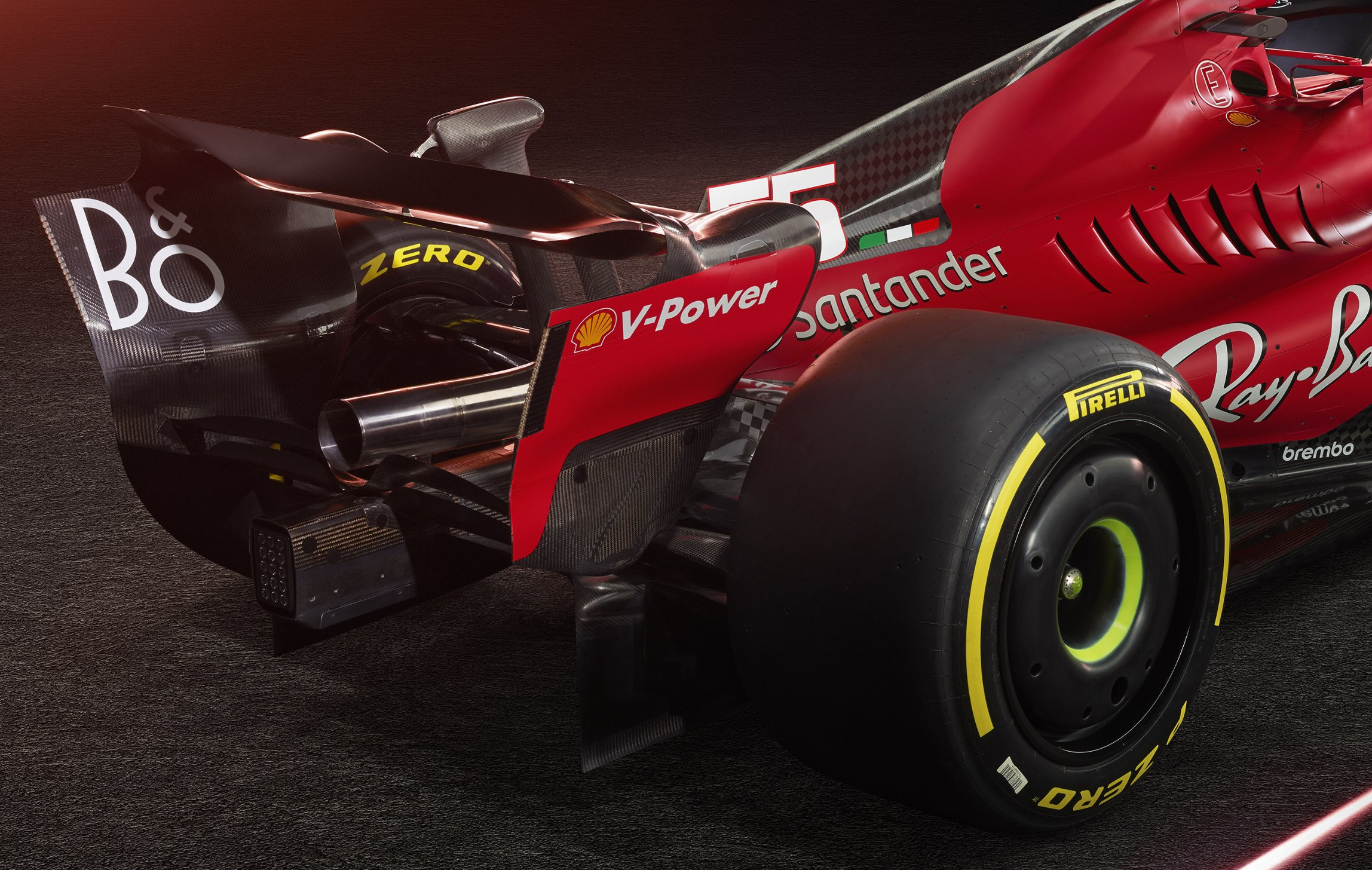
Photo: Scuderia Ferrari
At the end of the SF-23 the rear wing is also new, but as we know it is better not to "trust" much the low-downforce specification (with "swan neck" double pylon support and annexed beam wing, similar to the one brought to the last Belgian GP) shown during the presentation: if the development trend chosen for 2023 were to be the same as in 2022, we can expect 4 or 5 different specifications, in order to adapt the car to the downforce levels required from each track.
The central exhaust coming out from the internal combustion engine is no longer alongside the smaller one coming from the Wastegate valve. This might suggest a concentric layout, where the Wastegate exhaust is incorporated into the main one.
Power Unit, weight and lots of visible carbon
We deliberately dedicate some space at the end of our analysis for the aspects on which it is not possible to be certain.
Above all, the Power Unit, last season's Ferrari weakest point in terms of reliability: last year's problems, linked to a fragility of the engine block and the turbocompound, should be now solved. If this were the case, it would be legitimate to consider the rumours according to which the performance leap will be around 30 more horsepower (of which 15 hp were deliberately not used in 2022 in order to avoid further issues).
Finally, the weight chapter: the minimum regulatory mass is 798 kg, but all the teams - Ferrari included - would be having great difficulty approaching this threshold, paying for the "overweight" with a few tenths of a second per lap missing. Although it is said that the chassis of the SF-23 would be over 2 kg lighter, evidently this was not enough for the rec SF-23 (which is not so red): in fact, inspecting the large black areas due to the visible carbon we can understand the need to minimise painted areas, in order to reduce weight!
Immediately shakedown and filming day at Fiorano, off to the tests in Bahrain
The Scuderia wasted no time and immediately did the shakedown of the new SF-23 in front of an adoring crowd at the nearby Fiorano circuit. The following day, again at Fiorano, the 100 km scheduled for the filming day were covered - which the teams always exploit to the last metre to collect sensitive data on the behaviour of the various systems of their cars.
We will finally see Charles Leclerc and Carlos Sainz on the track in their Ferrari SF-23 from 23 to 25 February, for the pre-season tests scheduled on the Bahrain circuit of Sakhir. Once there, we will certainly be able to get an idea of the performance level across the field, and understand if it will be possible to dethrone the World Champion Max Verstappen and his Red Bull.
Index
Ferrari SF-23, "an unprecedented car in terms of speed"
- Front end concept inspired by the F1-75, but with some new features
- High sidepods and the return of S-Duct (?): many "grey areas" have been exploited!
- What are the changes at the rear of the SF-23?
- Power Unit, weight and lots of visible carbon
- Immediately shakedown and filming day at Fiorano, off to the tests in Bahrain